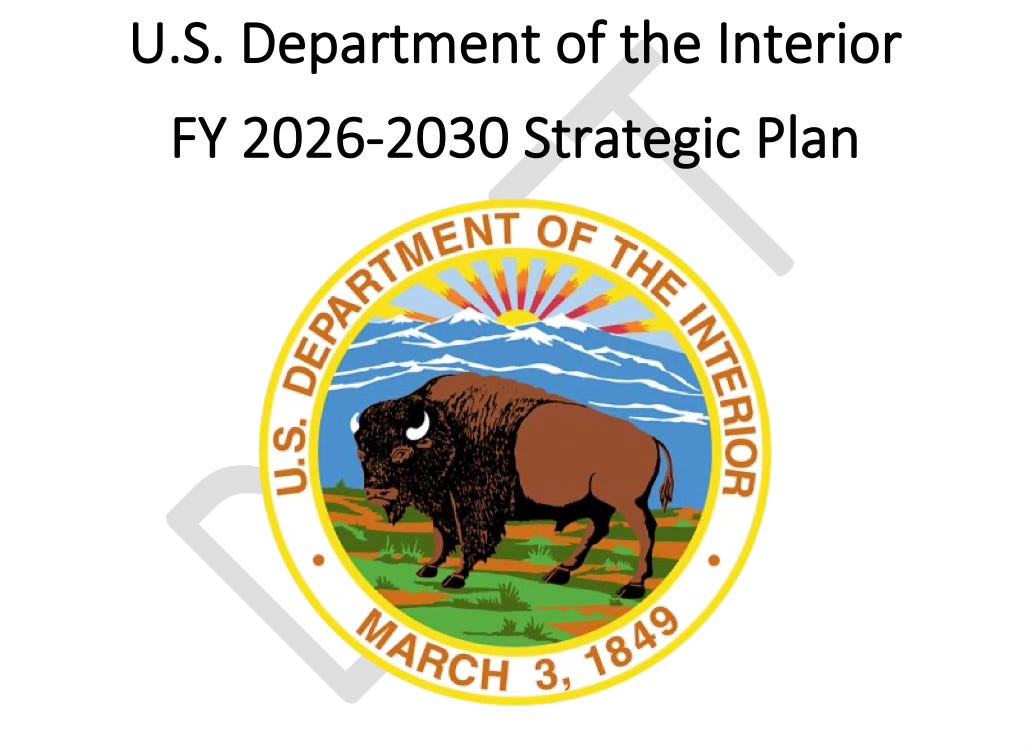New Interior Draft Strategic Plan Drops Mention Of Federal Land Reductions
The public version of DOI’s plan omits contentious goals contained in a prior leaked version.
The Interior Department has released a draft strategic plan that omits contentious goals contained in an internal version leaked two months ago. The internal document, first published by Public Domain in April, called for vastly expanding energy development on federal lands, while reducing federal land holdings, shrinking national monuments, dismantling environmental protections and systematically delisting endangered species.
The leaked version drew enormous backlash from public land advocates and environmental groups, which many condemned as an industry wish list and a roadmap for privatizing America’s shared public landscapes.
But the most controversial language does not appear in the public version, which the Interior Department's Bureau of Indian Affairs recently distributed to tribal nations ahead of a series of virtual consultations later this month.
The internal version was written in a bulleted outline format and appeared to contain elements, like performance metrics, that were never intended for public consumption. It specifically listed “release federal holdings to allow state and local communities to reduce costs (housing),” "return heritage lands and sites to the states" and “assess and right-size monuments” among the agency’s key strategies. Additionally, it proposed tracking the removal of species from Endangered Species Act protections as a key metric of success.
All of that language is absent from the latest version. The Interior Department did not respond to Public Domain’s request for comment Monday about the changes.
Still, the public draft plan closely mirrors the previous iteration, broadly outlining the Trump administration’s vision for using federal lands to boost revenues and “restore American prosperity.”
The draft references Interior’s interest in using federal lands to support housing development in three separate sections, but stops short of calling for lands to be “released.” The public version drops the internal draft’s call to “reduce the costs for grazing and other land uses,” but still envisions opening more of the agency’s lands to grazing, logging and mining. And while it notes that Interior will work to “delist endangered species once recovered,” it no longer describes delistings as a potential metric of success.
The chart below detailing the massive agency’s four top strategic goals for fiscal years 2026 through 2030 is largely unchanged from the leaked draft.
The draft plan echoes Interior Secretary Doug Burgum’s view that federal lands and the natural resources they hold are America’s “balance sheet” and that Americans deserve a better return on those “assets.”
“Today, managing America’s public lands and waters is more important than ever,” the draft plan’s introduction reads. “The Department of the Interior is the U.S. balance sheet, and natural resources are the country’s assets. These lands—rich in energy, minerals, biodiversity, and recreational value—are worth trillions of dollars to current and future generations.”






Thank you, Public Domain, for keeping the us apprised of the DOI's strategic planning. Using the example of the DOI potentially auctioning public land and/or land rights to private organizations (or states): the DOI could at some later time begin auctioning public land and claim that the DOI is simply following its approved strategic plan, that the public had an opportunity to comment on. Therefore the public must be vigilant to ensure that similarly negative goals and visions remain absent from administrative planning documents thus ensuring that the agency cannot later justify a negative proposal based on its inclusion in the approved strategic plan.